This talk
Foci:
- "Web 2.0" -- Definition; Issues
- Understand the data layer
- Linked Open Data movement
- Architectures for open data sharing
Pre-web
- Dial-up services AOL, Prodigy
- Documentation systems on individual computers
- Walled gardens
The web's value added was the unexpected reuse of information.
Web 1.0: The original plan
A shared read-write hypertext space
Universal:
- Any hardware
- Any operating system
- Any client (browser, editor)
- Any language
- Any culture
- Any disability
- Any quality level of information
- Any type of data
Any link must be able to go to any other document.
One Web.
Web 1.0 - result
- It worked!
- Lots of information
- Typical user does not write.
- Not a collaborative medium
Based on: URI, HTTP, HTML, CSS, PNG, JPEG
"Web 2.0"
Meme from Dale Dougherty and Tim O'Reilly
Not a release!
- Examples: Blogs, Facebook, Wikipedia, Dopplr, Twitter
- User-Generated Content
- Data re-use with in site
- Feeds of headlines (RSS)
- But ... Walled gardens all over again (c.f. AOL, Prodigy...; WAP...)
Based on: URI, HTTP, HTML, CSS, PNG, Javascript, DOM, JS access to HTTP
Social Networking in Web 2.0
- Walled gardens all over again (c.f. AOL, Prodigy...; WAP...)
- I want my data back!
- Some open APIs
- Linked Data with policy-aware access control
- Get the power of reuse
Social Silo problem
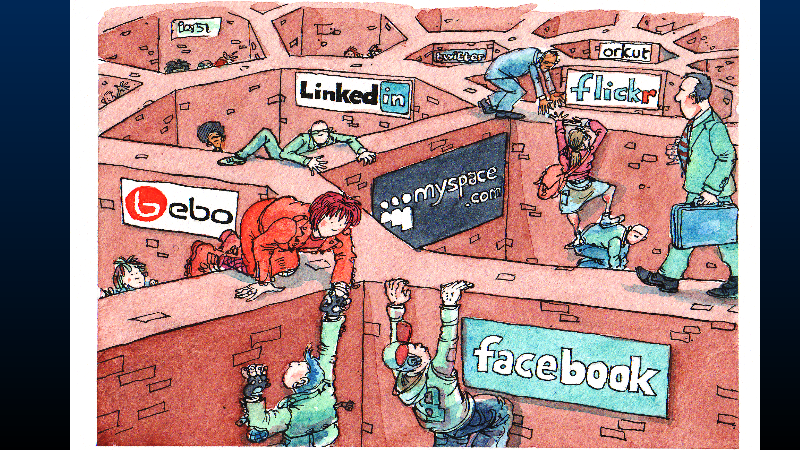
David Simonds/Economist, used by permission
Web 3.0 difference: value from linking data
Metcalfe's Law: The value of something in a network is rises with the
number of other things in the network.
With semantic web technology, data items become part of a network.
Therefore much greater value is achieved by connecting your data to much more.
Therefore it is important to make your data available for other data to connect to it.
Calendaring example
The best web 3.0 ap. pre linked data? (2009)
- I (user) can mash up person, enterprise and public calendars
- Multiple views of same data
- I can edit calendars I am allowed to access
- Fine-grained access control
but alas:
- Application-specific data format - iCalendar
- Application-specific protocols - CalDav
- Application-specific user interfaces
- Application-specific servers
My requirements for Web 3.0
- I (user) can mash up across all applications of data
- I can mash up person, enterprise and public data
- Multiple views of same data
- I can edit data I am allowed to access
- Fine-grained access control
so:
- Application-specific and generic views of data
- Generic protocols: HTTP, SPARQL
- Generic data formats: RDF, N3
- Generic servers aware of social web and appropriate access
- Clients aware of appropriate use
How?
Understanding the data layer
Layers: Link

Layers: Net hides links
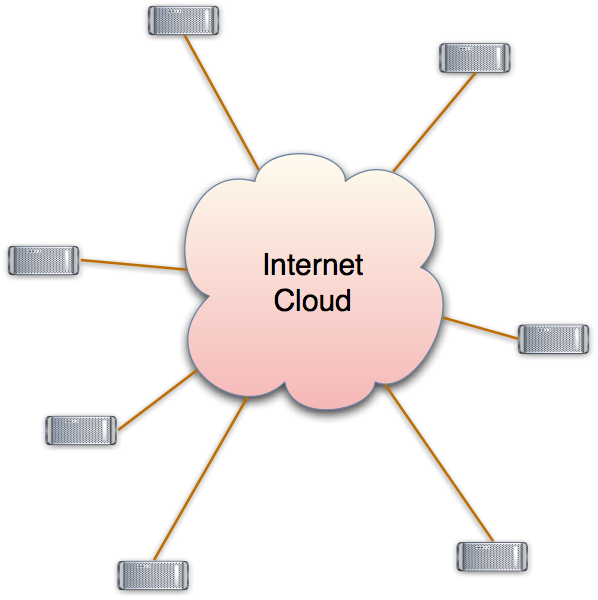
Layers: Web hides computers

Layers: Web hides computers
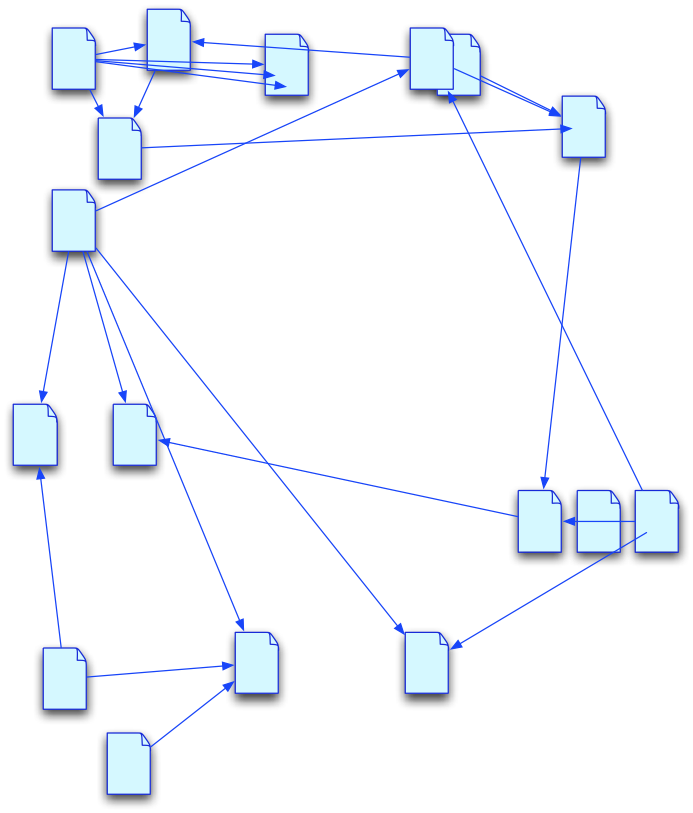
Layers: Linked Data
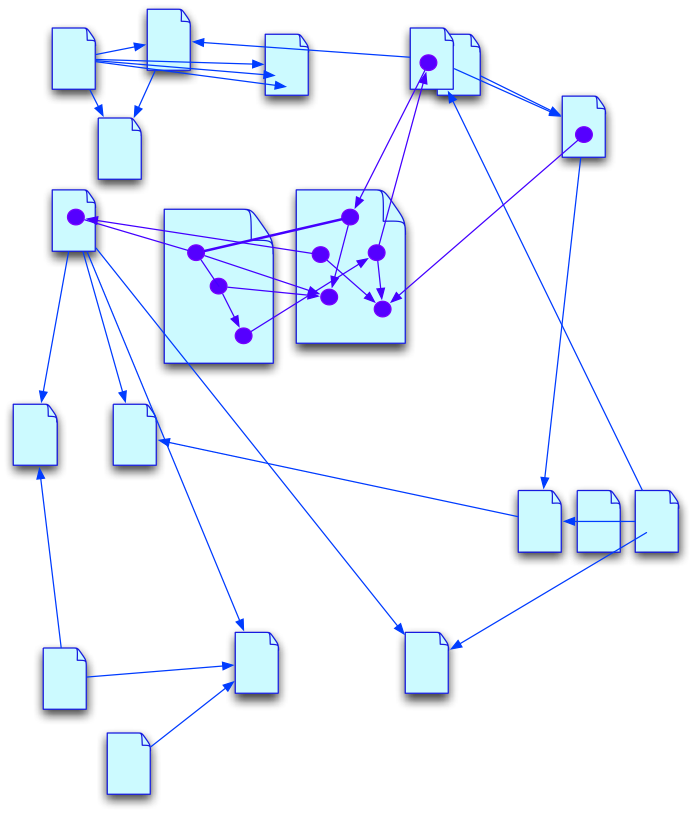
Layers: Data
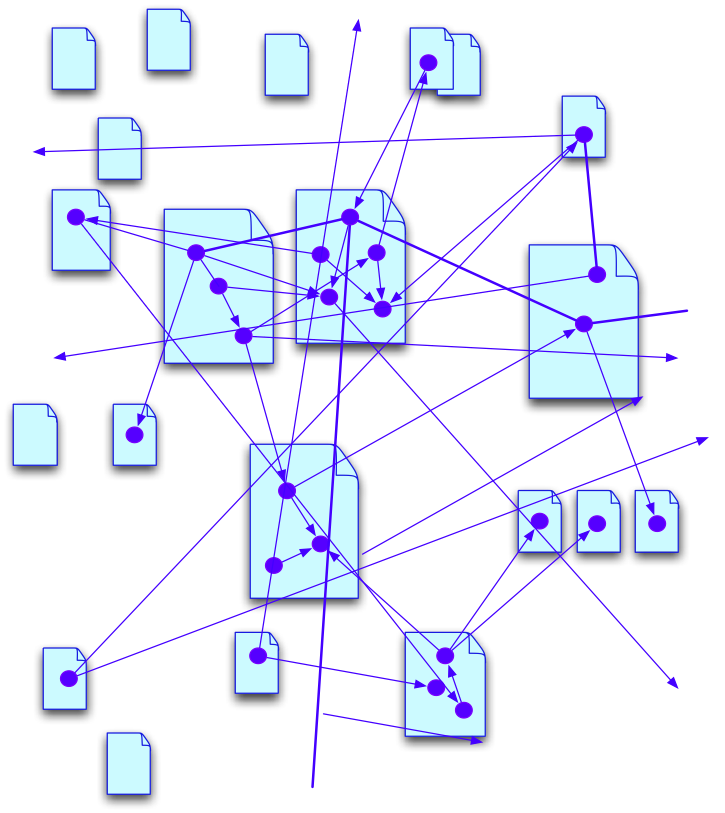
Layers: Linked Data

Layers: Linked Data
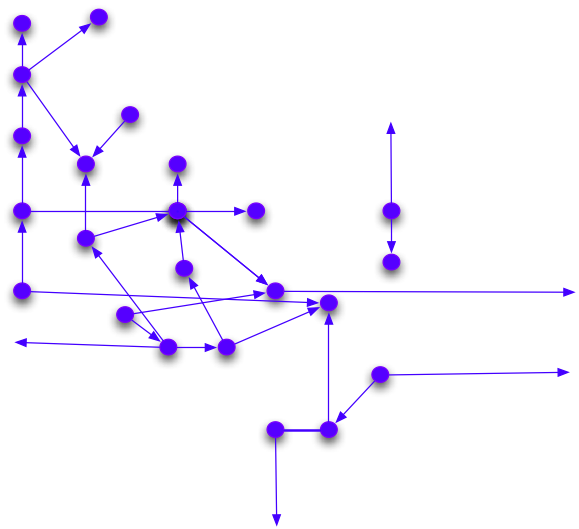
Social Silos - architecture
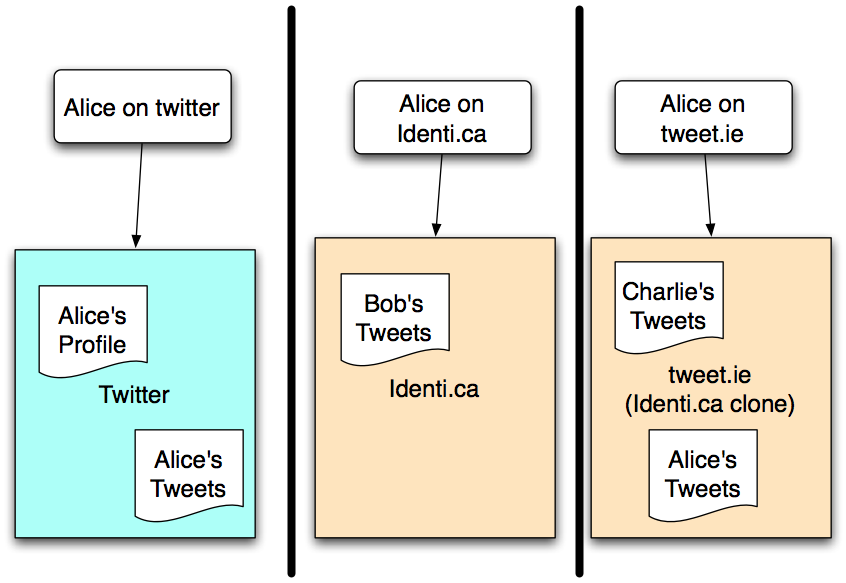
Open Social Networking - architecture

Identity - Personas
For decentralized social networking on the WWW,
identifiers for users and groups must be URIs
Goal: To involve groups and users on any other system
in, for example, access control.
- OpenId quite deployed
- FOAF+SSL coming out, has advantages
Generalizing: Linked Data
Linked Data essentials
- Use URIs
- Use HTTP URIs
- Serve useful information using SPARQL, RDF standards
- Mention URIs of related objects
(Branch: Detailed talk on Linked Open Data, 2008)
Linked Data everywhere
- Personal (calendars, money, etc)
- Social networks
- Government (e.g. Obama)
- Enterprise ...
- Science ...
- Community ...
Enterprise Data
Enterprise Applications
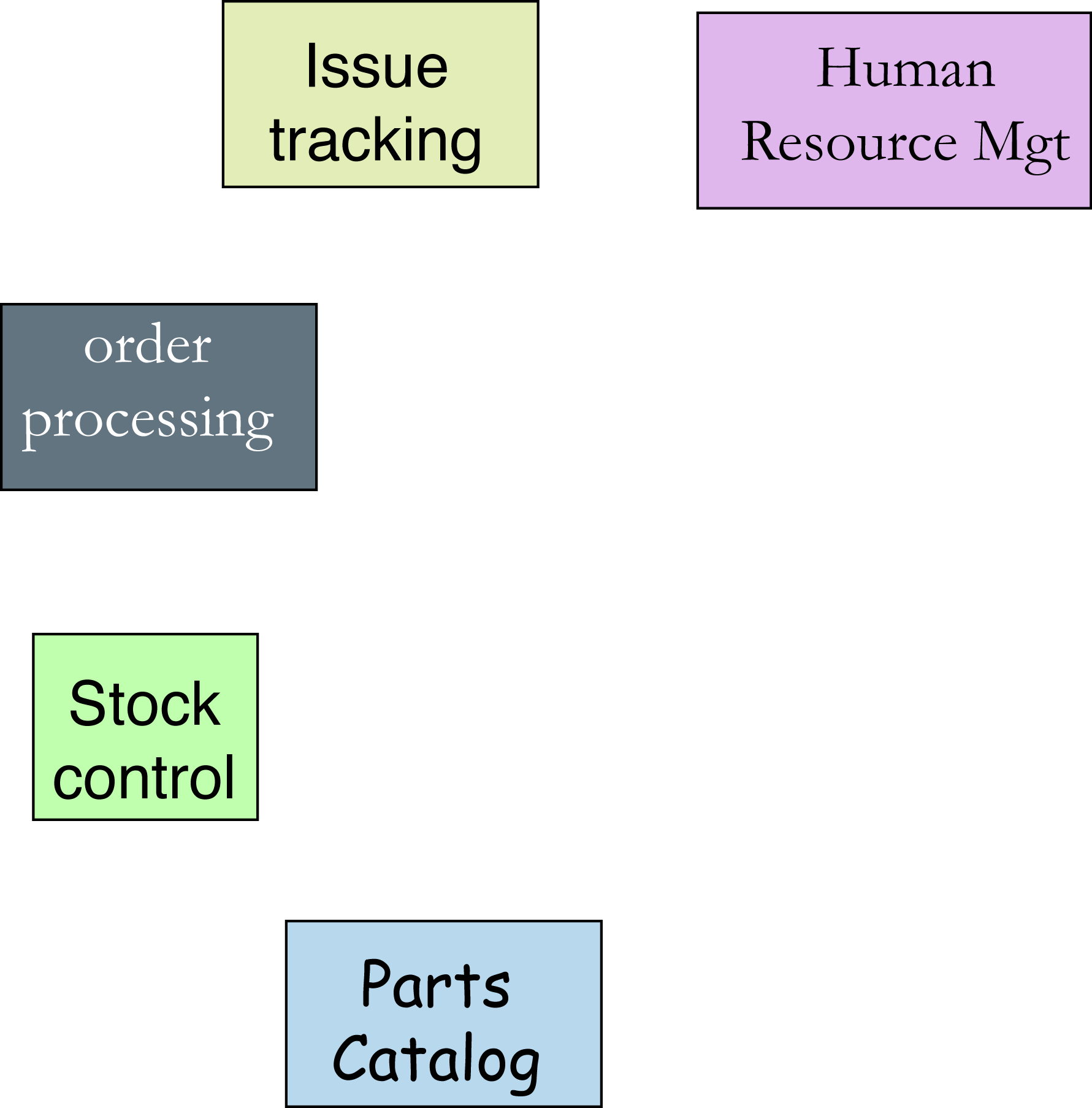
Enterprise Application Integration
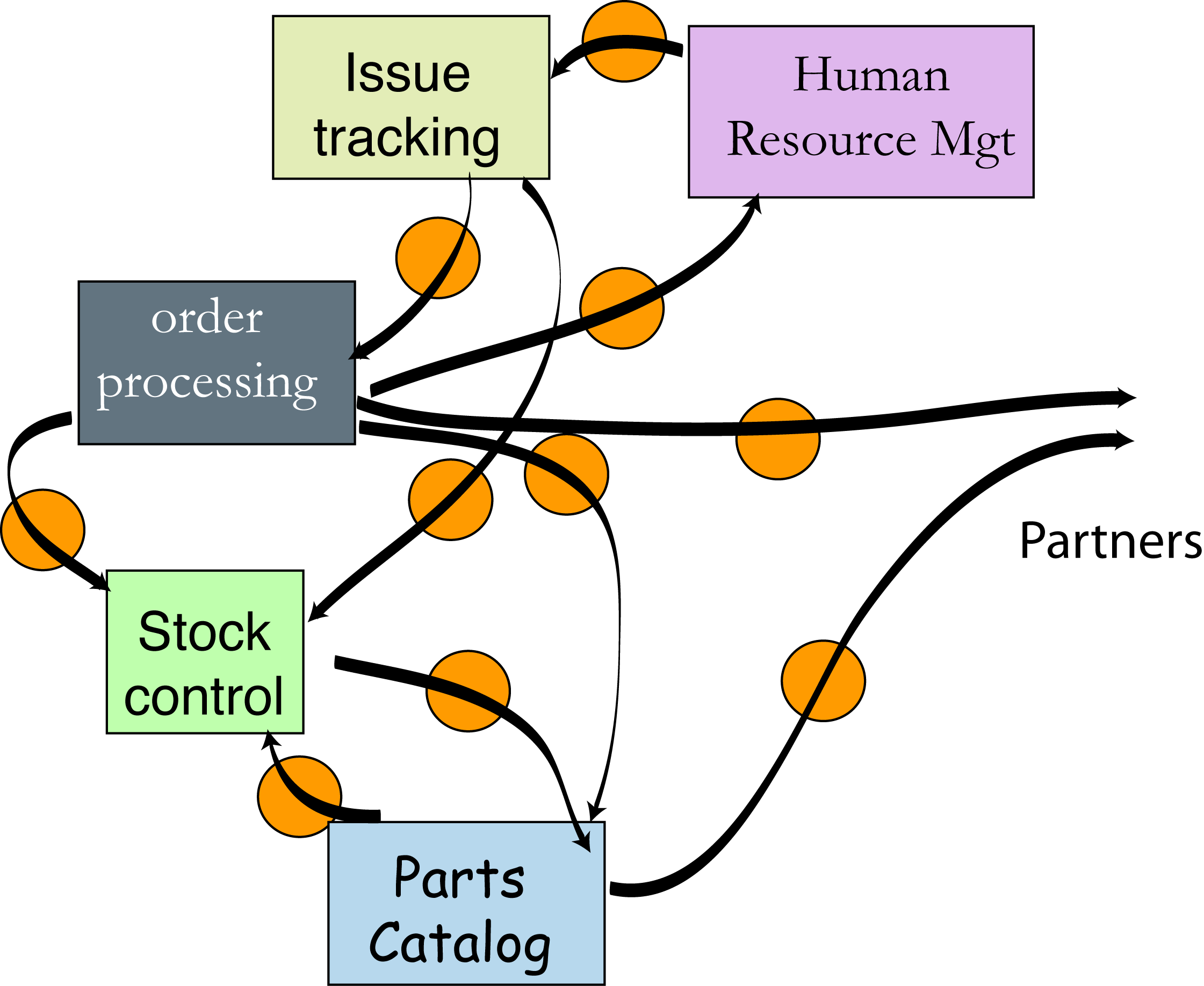
Issue: N2 connections
Using hub
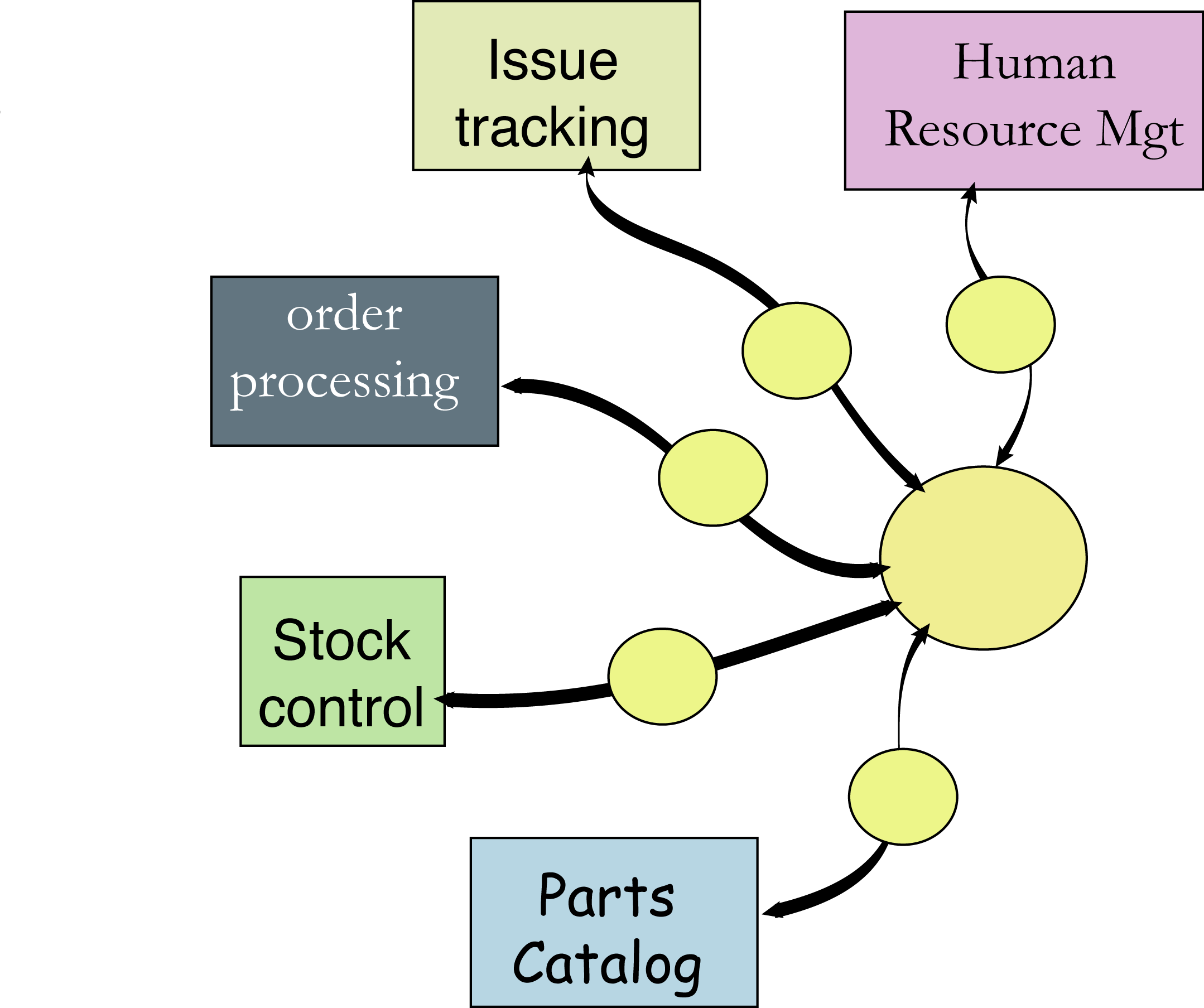
Issue: Give me my data back!
Using hub and standards
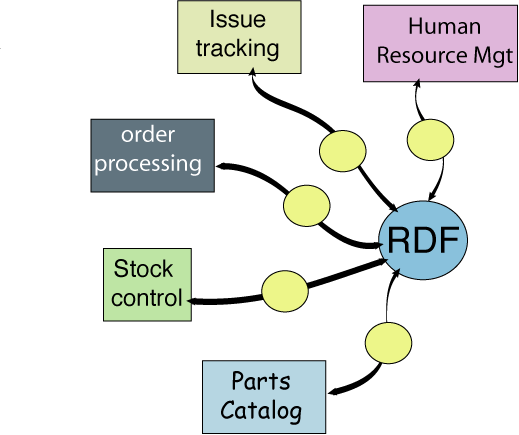
Issue: Connect to other enterprises
Global Integration bus
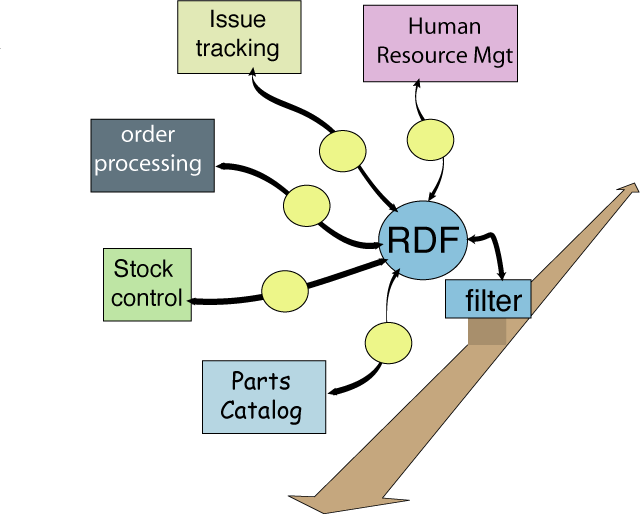
Motivation for Enterprise linked data
- Greater total value
- Greater efficiency
- Easier to do business with
- Competitive Progressive Disclosure
Scientific Data
Community Data
Linked Open Data March 2009
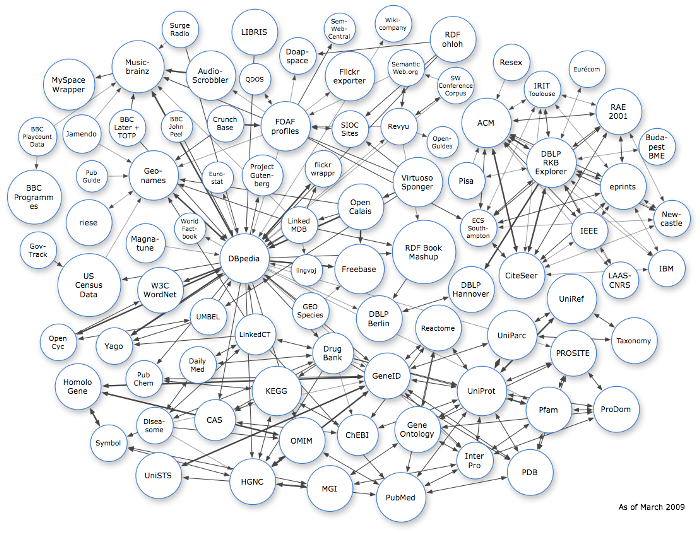
Why does this work? Scale free systems
Branch: (detailed
talk)
Message mixes vocabulary from many cultures
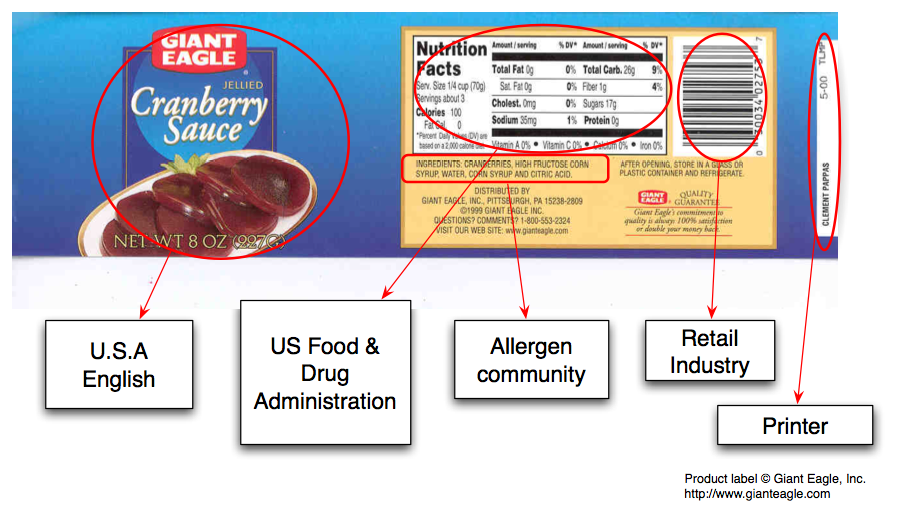
Why? Cultural Boundaries
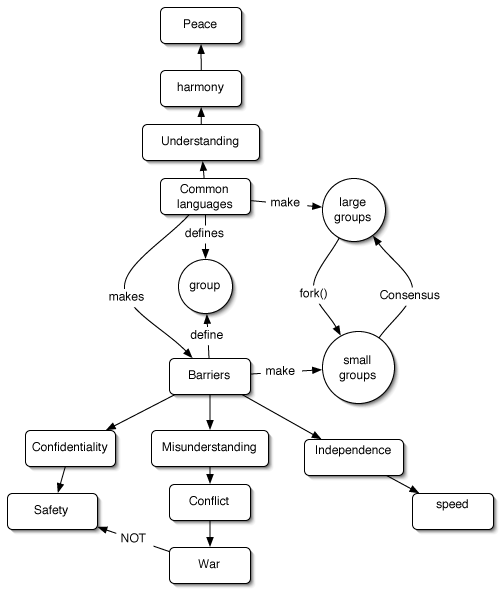
New: SW allows data mixing: Term by term
| dc:title | Data Integration and Transparency |
| cc:license |
<http://creativecommons.org/licenses/by-nc/3.0/> |
| dc:creator |
| foaf:name | Tim Berners-Lee |
| foaf:homepage | <http://ww.w3.org/People/Berners-Lee> |
| foaf:email | <mailto:timbl@w3.org> |
|
| tk:event |
| dt:start | 2007-06-12T09:00 |
| dt:end | 2007-06-12T10:00 |
| dt:summary | W3C-WSRI eGovernment workshop |
| geo:lat | 38.9 |
| geo:long | -77 |
|
| tk:slides | <http://www.w3.org/2007/Talks/0618-egov-tbl> |
| tim:slideCount | 12 |
One item may involve data from many ontologies
Total Cost of Ontologies (TCO)
Assume :-) ontologies
evenly spread across orders of magnitude; committee size
as log(community), time as committee^2, cost shared across
community.
| Scale |
Eg |
Committee size |
Cost per ontology (weeks) |
My share of cost |
| 0 |
Me |
1 |
1 |
1 |
| 10 |
My team |
4 |
16 |
1.6 |
| 100 |
Group |
7 |
49 |
0.49 |
| 1000 |
|
10 |
100 |
0.10 |
| 10k |
Enterprise |
13 |
169 |
0.017 |
| 100k |
Business area |
16 |
256 |
0.0026 |
| 1M |
|
19 |
361 |
0.00036 |
| 10M |
|
22 |
484 |
0.000048 |
| 100M |
National, State |
25 |
625 |
0.000006 |
| 1G |
EU, US |
28 |
784 |
0.000001 |
| 10G |
Planet |
31 |
961 |
0.000000 |
Total cost of 10 ontologies: 3.2 weeks. Serious project: 30
ontologies, TCO = 10 weeks.
Lesson: Do your bit. Others
will do theirs.
Thank those who do working groups!
Scale-free
Scale-free systems are not just observed, they should be enhgineered for.
Engineering for them gives us the best tradeoff between diversity and harmony.
Sem Web technology allows us to do this.
Key points
- Value of data, unexpected reuse, hampered by silos
- Linked Open Data movement
- Data: Personal, Government, Enterprise, Scientific, Social, Community,...
- Many communities => mix voacularies.
- Do your bit, others will do theirs.
2009 is the year to just do it.
Credits
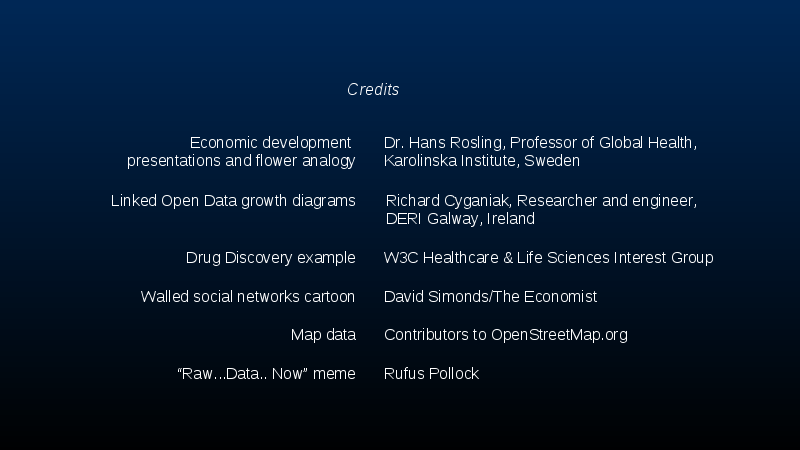
Web 2.0 meme: Dale Dougherty and Tim O'Reilly
Product label: (c) Giant Eagle, Inc.
This talk: http://www.w3.org/2009/Talks/0427-web30-tbl


























